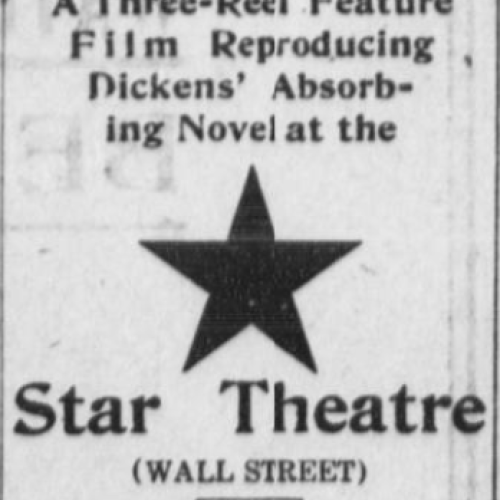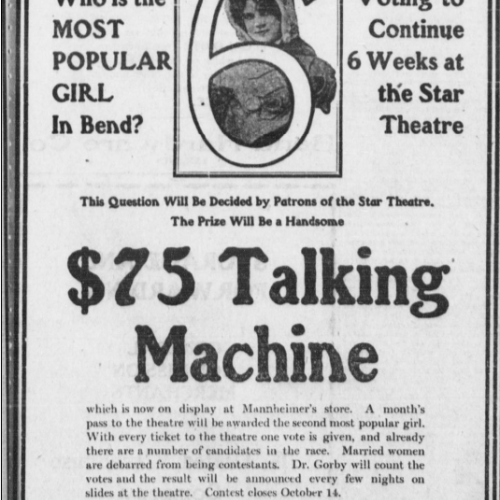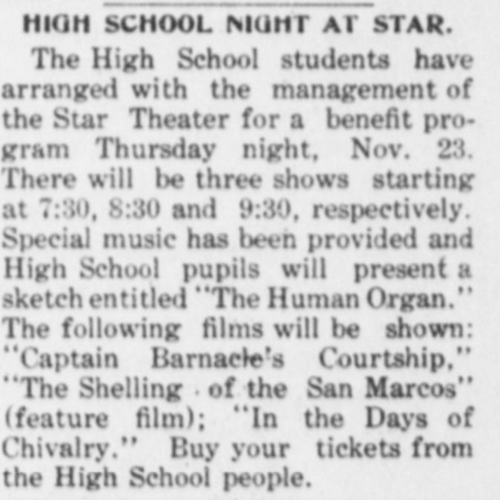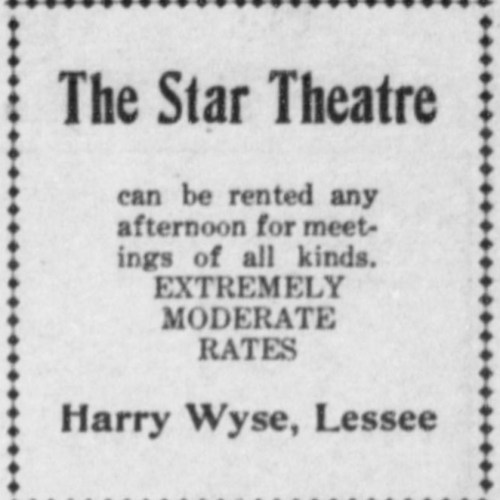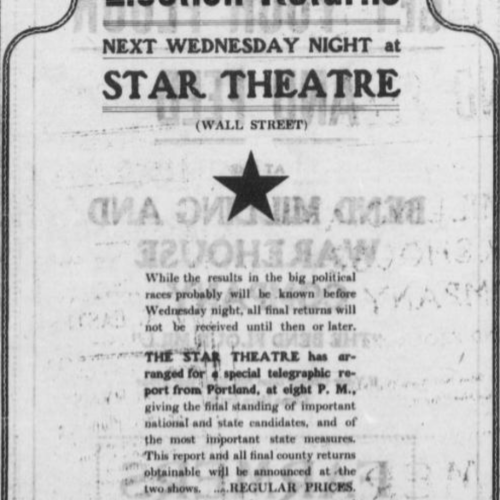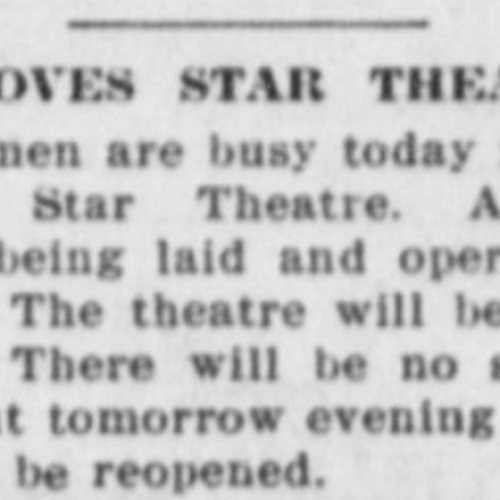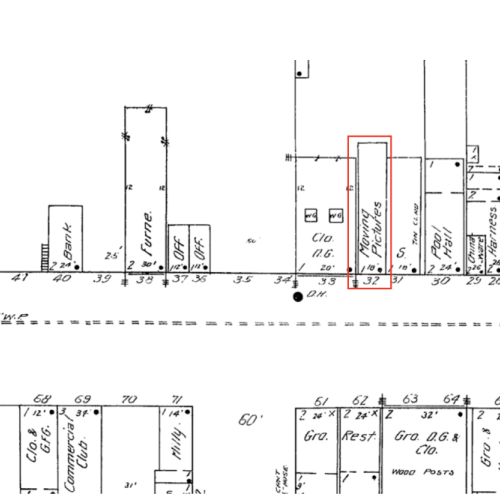July 5th, 1911 marked the opening of the Star Theatre with a simple announcement declaring a "New Moving Picture House" in The Bend Bulletin 1. The Star was opened by Edd Newman and Al Hill, two entrepreneurs out of Edmond, Washington, trying to make it in the movie exhibition business. Admission prices were 15 and 10 cents. In the theater's first few months of business boasted of an electric piano, an "electric sign to blaze forth on the street," 2, big crowds, films with big stars, programs that show four times a week and shows given every night. The early success meant that Newman, who bought his partner Hill's shares in the venture early on, could invest in an aluminum screen which lessened the flicker of the projector3. A year after the initial opening, Newman sold the Star to new proprietors. This first change in ownership was the first in a number of management changes that ocurred in the next year, ultimately resulting in a fizzled out ending of the Star.
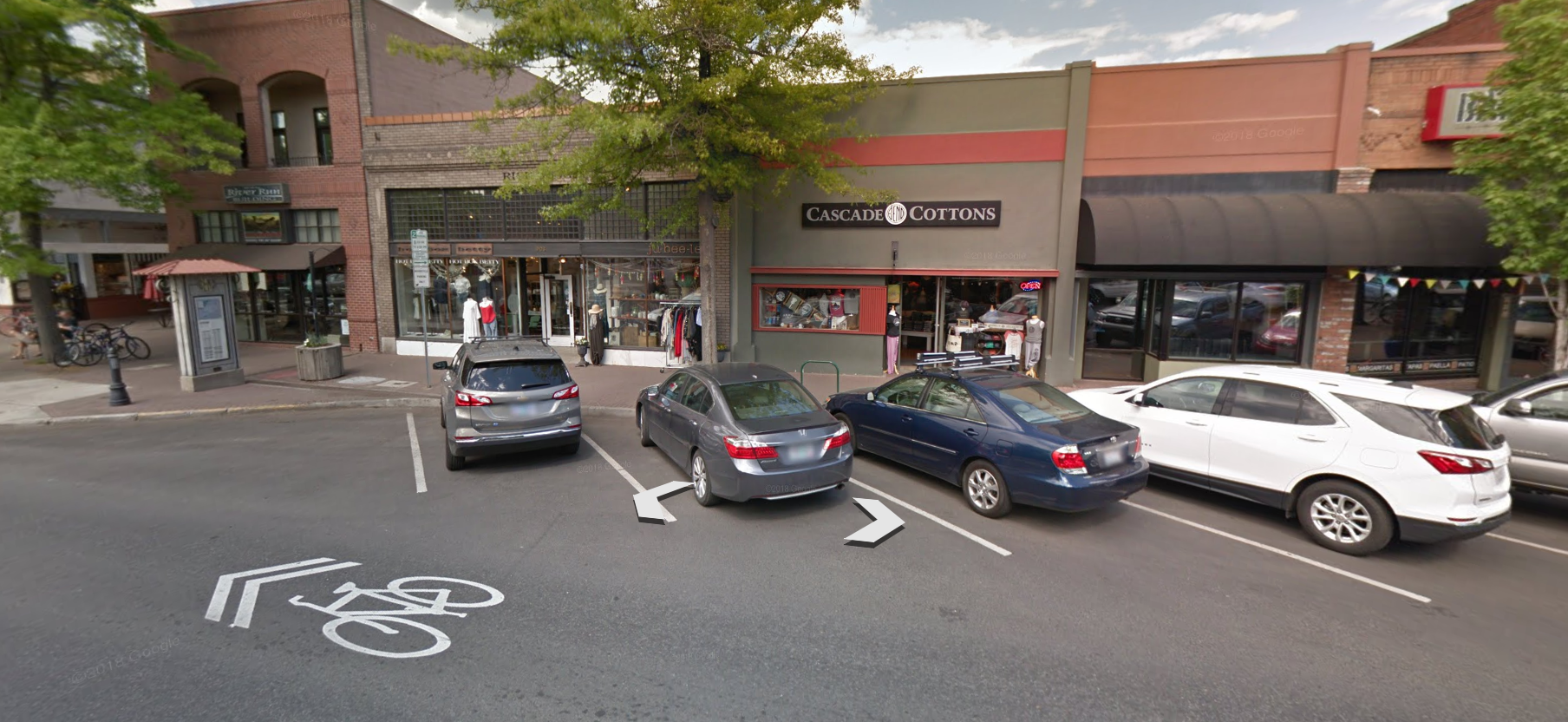
Google Earth. (2021) 909 NW Wall St., Bend, OR.

The Bend Bulletin. Jul. 02, 1912. Historic Oregon Newspapers.
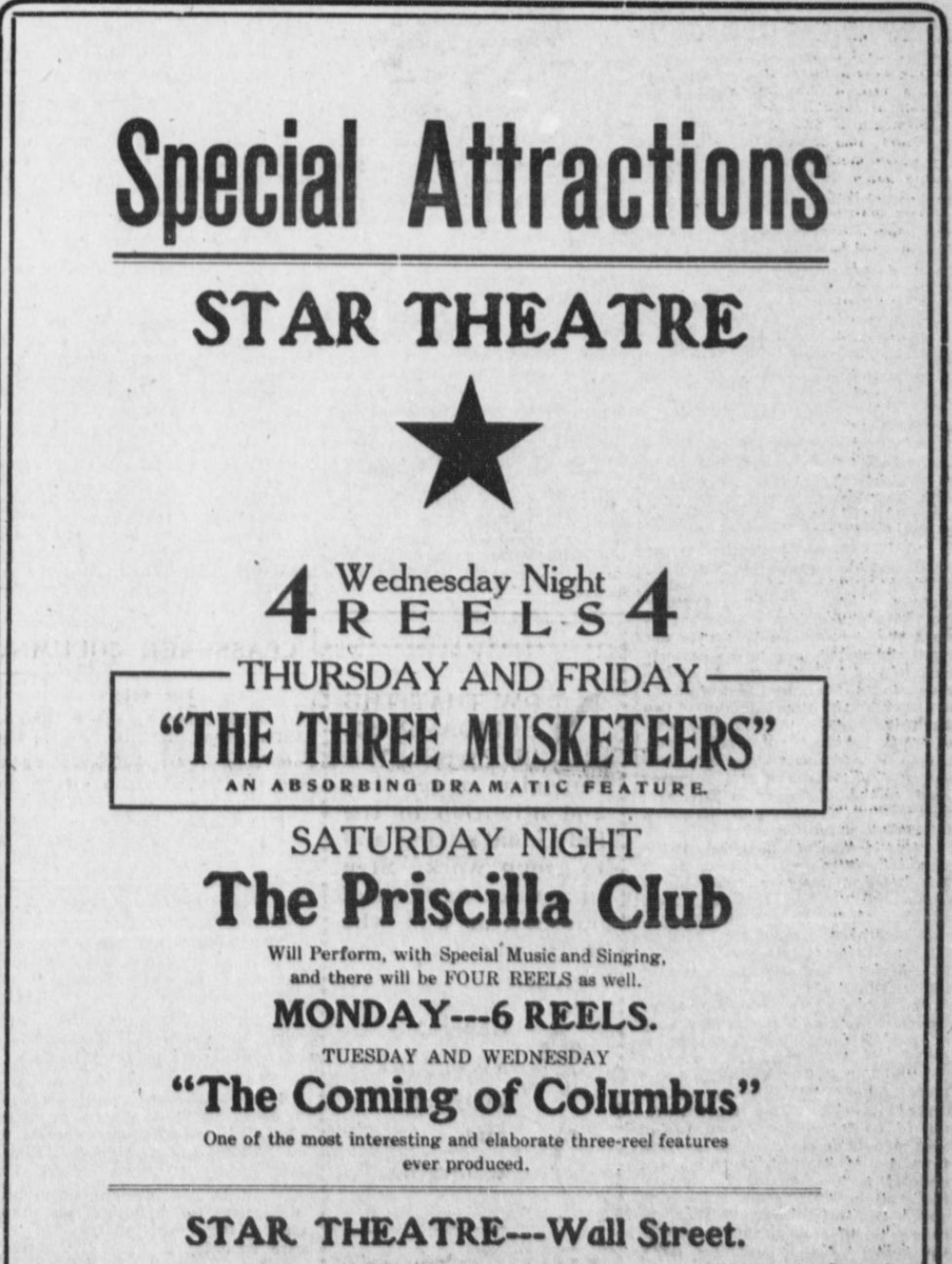
The Bend Bulletin. Jan. 15, 1913. Historic Oregon Newspapers.
The Star proclaimed to show only the best pictures for family audiences that were approved by the state board of censorship1. The Star showed all kinds of films from all kinds of genre, and number of well-known films including, “A Tale of Two Cities," “The Three Musketeers,” “The Shelling of San Marcos” and “The Coming of Colombus." However, other things were shown as well including Vaudeville, State election results, current events, "Oregon scenes", Biblical films, Portland newsreels and instruction films about electricity5. This type of diversity and high quality films were just a few tactics the Star management used to make their establishment to meet their advertising goal to "please all"6.
More than just moving images, the Star Theatre was a town hub for the community. The theater space was rented out and used a community center for local events, discussions, benefits, and meetings. Most commonly, the Star was used by local churches for Sunday services. In fact, Presbyterian preacher Dr. Gorby, whose church used the Star throughout 1912, was also involved with theater events. One of the theater's largest advertisements was a competition to vote for the "Most Popular Girl in Bend,"4. For six weeks, theater patrons could place their vote for the most popular girl in town with the winner would win a "$75 Dollar Talking Machine"4. The weekly votes were counted by Dr. Gorby. In addition to church events, other community events were hosted by the Star included Library Benefits, Boy Scout events, High School benefits and dances, Ladies clubs and companies like the Arnold Irrigation company and General Electric. Beyond what we think of as the role of movie theaters today, it's clear that The Star was much more than that. The Star Theatre was much more than that to Bend.
